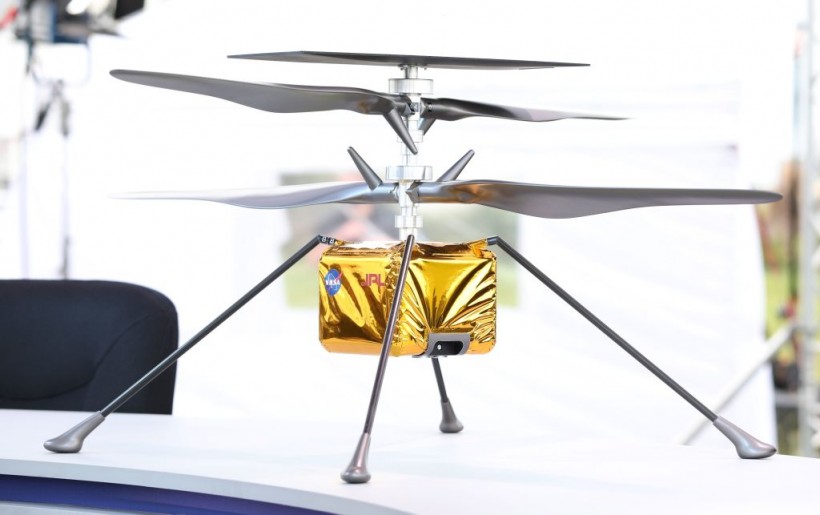NASA unveiled a video demonstrating the testing of Mars helicopter rotor blades at the Jet Propulsion Laboratory (JPL) on September 15, a day before Ingenuity's historic flight. Following Ingenuity's success, NASA aims to integrate more resilient helicopter drones into upcoming Mars missions, surpassing the accomplishments of the current model, which has achieved 66 flights.

A close-up view of a full size model of the Ingenuity helicopter, which will be part of the Perseverance rover set to launch to Mars, is displayed at Cape Canaveral Air Force Station in Florida on July 28, 2020.
Testing the Next-Gen Mars Helicopter Rotor System in High-Tech Space Simulator
Navigating a helicopter on Mars poses a significant challenge due to the planet's exceedingly thin atmosphere, which is only 1% as dense as Earth's. Coping with this, engineers at JPL are exploring a novel rotor design capable of spinning nearly at the speed of sound.
This design is undergoing testing in a simulator space that replicates Mars-like conditions, including extreme cold and low pressure. Teddy Tzanetos, project manager for Ingenuity and Mars Sample Recovery Helicopters, highlighted the advantage of testing in both Earth's controlled environment and Mars' authentic off-world conditions.
In the 25-foot Space Simulator at NASA's Jet Propulsion Laboratory in Southern California, a dual rotor system for the next generation of Mars helicopters underwent testing on September 15, 2023.
The carbon-fiber blades, longer and sturdier than those on NASA's Ingenuity Mars Helicopter, were progressively spun at higher speeds and increased pitch angles over three weeks to assess their resilience as they approached near-supersonic speeds, reaching Mach 0.95 during the test.
The vacuum chamber of the simulator, replicating Mars-like conditions, facilitated this durability assessment. The test, captured in a NASA video, showcased the blades' performance inside the chamber.
Managed by JPL, the Ingenuity Mars Helicopter project receives support from NASA's Science Mission Directorate, with contributions from NASA's Ames Research Center and Langley Research Center, as well as assistance from AeroVironment Inc., Qualcomm, SolAero, and Lockheed Martin Space. JPL is overseen by Caltech for NASA.
READ ALSO: NASA Mars Ingenuity Helicopter First Flight: How the Rotocraft Lifted Off Martian Atmosphere [WATCH]
Ingenuity Sets Mars Records, Showcasing NASA's Innovation
Ingenuity achieved a remarkable feat on September 16 with its 59th flight, soaring to an altitude of 66 feet, setting a new record for its highest flight at the time. This achievement was later surpassed on October 5 when Ingenuity ascended to an even greater height of 79 feet during its flight.
Originally designed for a proof-of-concept demonstration with just five planned flights, Ingenuity has exceeded expectations on its extended mission. Since its touchdown on Mars alongside NASA's Perseverance rover in February 2021, the helicopter has spent nearly 2 cumulative hours in the Martian atmosphere, covering a total distance of 9 miles.
The significance of the September 16 flight is underscored by the fact that it occurred concurrently with the terrestrial testing of components for its successor spacecraft, conducted just a day before.
Ingenuity, initially a test vehicle, has far outlasted its anticipated lifespan, showcasing NASA's ability to conduct nearly simultaneous interplanetary flight tests in both simulated and actual off-world conditions- an impressive testament to humanity's advancements in space exploration.
This enduring success not only reflects the space agency's commitment to innovation but also underscores its unwavering determination to push the boundaries of exploration in the vast expanse of the cosmos.
RELATED ARTICLE: Ingenuity Helicopter Captures Perseverance Rover on Mars During Its 51st Flight
Check out more news and information on Space in Science Times.














